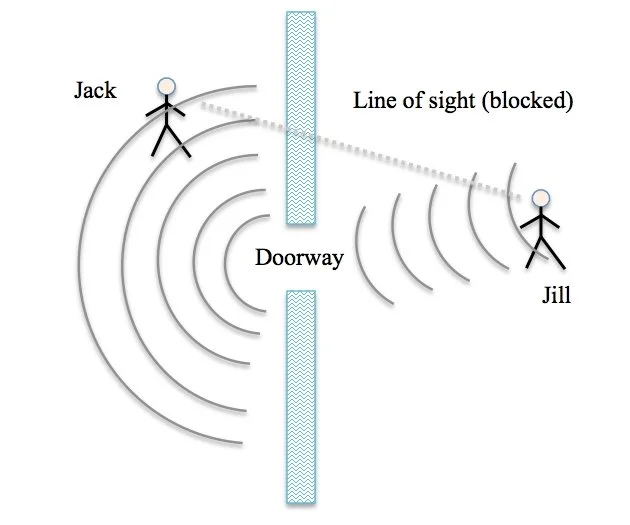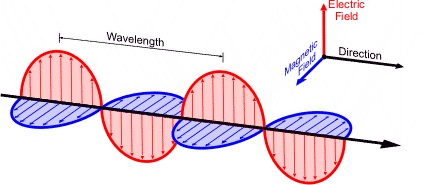Sounds like Light?
Sound and light both transfer energy. But they travel in very different ways. To manage them, we must understand them, because it’s much harder to stop one than the other…
Outside my studio I noticed this very curious pattern of light.
How on earth did this form?
As I closed opened the door wider, the three lines gradually coalesced into a single bright mass (see slideshow below).






As Ollivander would say: curious. Very curious.
Where did those lines come from in the first place?
The origin revealed… a step forward.
Ah, of course, the wooden mullions separating the panes of glass. That explains the origin at least, but not why it transferred so perfectly to the other side of the door! (We’ll get back to how this differs from sound in a minute.)
I worked it out.
When the door opening was narrow, the dark lines (the shape of the mullions) look focused. This is because the narrow opening of the door focused the light, just like the narrow aperture of a camera lens.
Excellent aperture diagram by Richard Adams: https://silentpeakphoto.com/beginner-photography/what-is-aperture-in-photography/
Light travels in straight lines. When the aperture/door opening is small, the light from the window panes hasn’t got many options - it can only hit a precise point on the other side of the door, so it creates a sharp image, here revealing the pattern of the mullions, which is the only places the light from the actual windows couldn’t reach.
Straight lines! Aka. “Rectilinear Propagation of Light” if you’re a Physicist. https://byjus.com/physics/rectilinear-propagation-reflection-of-light/
With a wider aperture, the light has a wider range of angles it can get through the opening at, and so the images of the three window panes become more blurry. At some point, the three areas all merge together, and you get some curious geometry thanks to their overlapping bright areas.
The dark bands have almost gone… but not before they cross each other!
This simple demonstration of optical physics is a favourite in classrooms - the cheapest camera you can make. One little pinhole, a box and a screen. That’s how those early cameras were (plus a photographic plate) and why the photographer would climb under a little hood to take the picture!
Pinhole camera. Basically a box with a pinhole on one end. From https://news.smugmug.com/a-beginners-guide-to-pinhole-photography-ce7cf6b06fcb
So then, how about sound?
Well, unlike light in our example, sound always travels like a wave. And it goes out in every direction, as long as it has something to travel through. (Like air, or water, or earth… but famously not the vacuum of space - hence why out there “noone can hear you scream”!)
It can also go around corners, unlike light which HAS to be reflected to get around corners.
Diffraction is the phenomenon where sound gets around corners. Essentially, the gap turns into a new “source” of the sound for someone on the other side of the wall. From https://www.compadre.org/osp/EJSS/4480/268.htm
It’s often harder to stop sound, too. With light you just need an opaque object. A thin bit of black card would do it. But that would hardly stop sound waves! Even a thick bit of lead, which is brilliant at stopping even the most violently energetic light, wouldn’t stop all the sound waves a human can make.
It’s a lot to do with how big the sound waves and light waves are. I know I said light doesn’t travel like a wave in our example, but it does also behave like a wave in many scenarios. (Look up the double-slit experiment!)
Yeah, this is light, and it behaves like a wave as well as a particle. From https://www.noaa.gov/jetstream/satellites/electromagnetic-waves
Visible ight waves are tiny, tiny fractions of a centimetre long, whereas sound waves of the voice are anywhere between about 2cm to 10 metres long! So, a bit of card is massively thick to a light ray and so it can’t go through very far at all (as long as the card is opaque and not transparent… we’ll leave that complex physics for another time). The same bit of card is very thin for a sound wave and it passes through without losing much energy (effectively volume for us!)
And so, you need thicker stuff to absorb sound and also stop it, and you also need to make sure there are no gaps anywhere - no cracks in the window or spaces under the door. Because sound is so good at going around corners, it will emanate from any little opening and find its way to the microphone.
A true anechoic chamber - meaning without any echo. (An-echo-ic). From https://isvr.co.uk/anechoic-chamber/
So, to summarise.
Visible light travels in straight lines and is easy to stop because its wavelengths are small. Sound travels in all possible directions and is hard to stop because its wavelengths are long.
That’s why it’s easier to darken a room with blackout blinds/curtains than to totally soundproof one. And also why the light forms the cool pattern through the door, but you’d hear someone fairly clearly, just a bit quieter.








